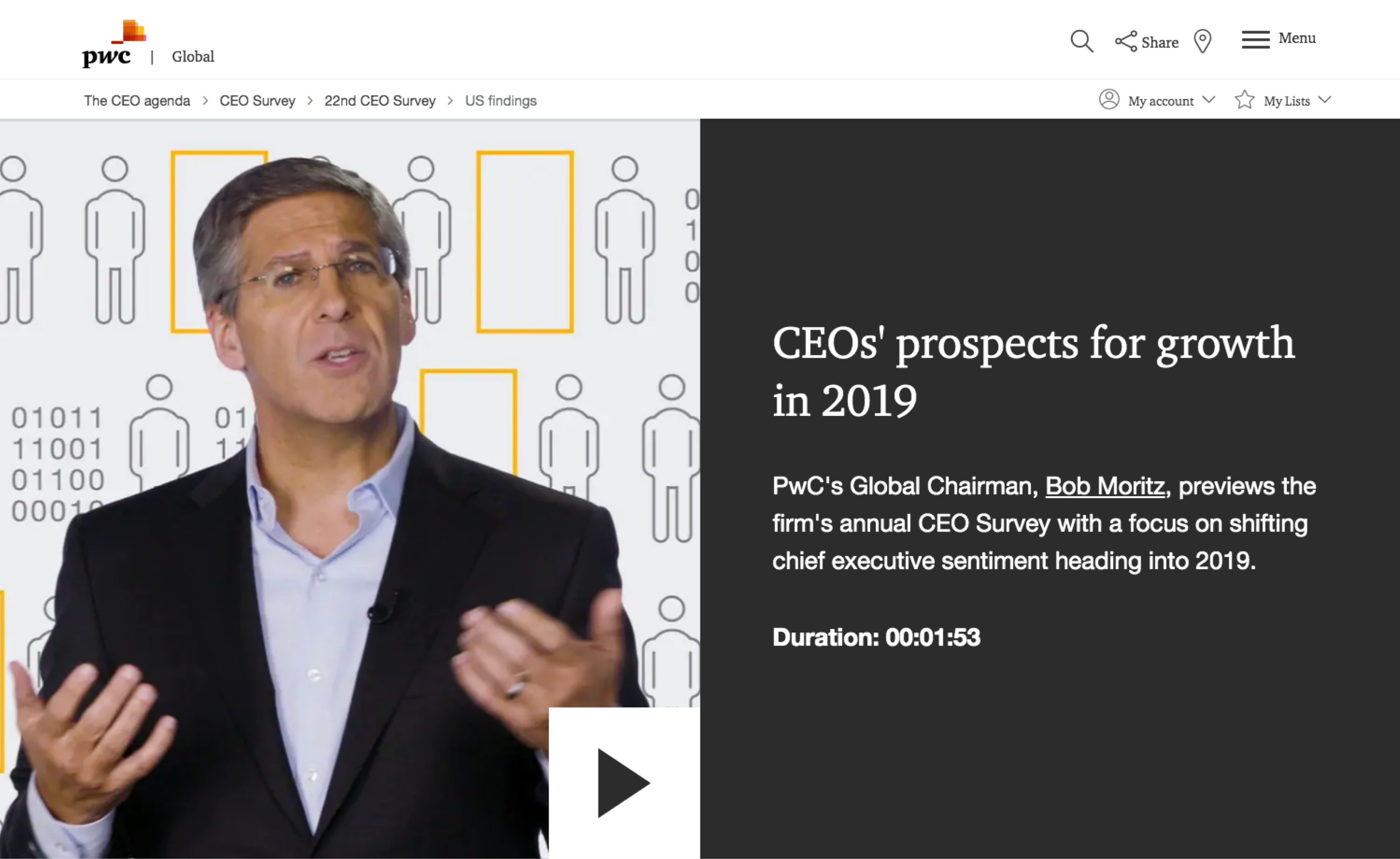5 Ways to Create Memorable Online Brand Experiences - Part 2
Videos and Animation
Over the past several years, the rise of specific UI patterns in professional services web design has resulted in a landscape where many sites now look and work in similar ways as each other because users have come to expect certain features and functionality structures to be in place. And since the main goal of any website should be getting the viewer to the content they’re seeking as quickly as possible, there are now some parameters of web design that, while they may be overused, have become essential in a way. Visitors don’t have the patience to figure out how to interact with a site once they get there. If you try to do anything too out-of-the-box or uncommon, you run the risk of creating a frustrating UX because users expect certain content conventions to be in place. So given that reality, what can law firms do to still create memorable website experiences, and how can they do that without sacrificing the expected user experience along the way?
In Part 1 of this five-part series, we explored how firms could use message-driven visuals and a renewed focus on brand positioning to create a more effective and impactful website. In Part 2, we’ll take a look at how firms can utilize videos and micro-animations to stand out in a crowded market.
Tactic 2: Videos and Animation
Finding ways to present content and communicate messages visually has far greater potential than text-heavy pages, especially in today’s environment where viewers don’t have the time or attention span to wade through paragraphs of content to find what they’re looking for. So, firms are finding ways to limit the amount of written content and explore other ways to communicate key message points. Enter video. The integration of videos, as well as micro-animations, are excellent tactics to create a more memorable, unique experience within a more traditional site structure.
Agencies have been pushing firms to use more video for a long time now, primarily due to their propensity for generating higher interest levels and creating a more emotionally-based connection with the viewer. Videos can be incorporated in a variety of ways that can add energy, spirit and personality to a site at a depth that static imagery and written content simply can’t do. According to the Digital Branding Institute, videos consistently outperform other forms of online content time and time again.
Videos like this one on Mintz’s website can capture a sense of what life is like within a firm’s offices, while doing so in a way that doesn’t interfere with the UX of the site or seem overbearing. These type of videos offer a window into your firm by highlighting aspects like the personalities of the attorneys working there, the set-up of the office space and the firm’s underlying culture.
Or, videos can be more conceptual in nature, to support a firm’s broader brand messaging themes. This type of video that Aronson uses could easily have been a similar static image tied into this brand messaging – but it wouldn’t have had the same visual impact with the viewer on that initial interaction.
And then obviously videos can be used to promote more insightful content pieces. Videos are an effective way to educate the viewer about a firm’s services, experience, values and industry insights – like PWC does here with a short video previewing the firm’s annual CEO survey. For law firms in particular, videos could be used to talk through things like client case studies and industry forecasts, show the personalities of individual firm attorneys, and capture the internal culture and work environment of the firm, which can very effective when it comes to lateral and law student recruiting efforts.

The use of micro-animations are also an excellent way to make the user feel more engaged with your website. For those unfamiliar with that term, “micro-animations” refer to more limited, subtle animations on a website that can be set up to respond to the viewer’s scrolling motions, mouse movements and clicks, so that as the viewer travels through the website and interacts with certain elements, those elements interact back. This helps increase that feeling of reciprocal engagement that a viewer has with a website, bringing the experience to life a little bit more. It’s not just a typical one-way engagement that most websites offer.
On King & Spalding’s site, the firm does an excellent job of turning their case studies into compelling micro-sites, in part through the incorporation of micro-animations. They start off with some industry-focused animation, and as you scroll down the page, they present background and details of the case in small, bite size chunks. Brief headlines. Timelines. Videos offering more detailed insights. This particular example incorporates multiple tactics with design best practices, and the end result is a page that is both very robust with content, but presented in a way that is inviting, engaging, humanizes the firm (through those videos) and doesn’t feel daunting for the viewer to interact with.
One more example from outside the legal industry: Ellin & Tucker does an excellent job of working in various micro-animations throughout their homepage. See how they use their animations to frame their primary messaging and then draw attention to other key elements as you move down the page.
These animations help propel the page forward and add some energy and life into the engagement. They even have their video set to auto-play. You’ll notice they actively take control of their messaging approach and the benefit they provide to their clients.
Firms need to embrace their role as storytellers of their own brands. Your website tells a story about your firm, whether you are taking active control over that messaging or not. The words you use, the imagery you select, the layout choices you make, the content you choose to highlight – it all combines to form a story in the mind of the viewer about who your firm is and what you’re capable of. And videos and other animations offer much richer potential than traditional written content.
Check back soon for Part 3 of our series, where we’ll shift tracks from visual tactics to a couple technology focused ones, beginning with a discussion around content personalization and how artificial intelligence has worked its way into the law firm website sphere.
Are you ready to distinguish your firm’s website? Contact Herrmann’s Chief Business Development Officer, John Albert, at john@herrmann.com to set up a free consultation today.


